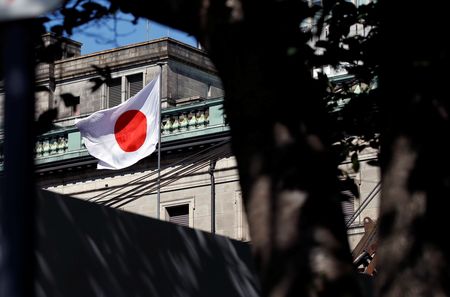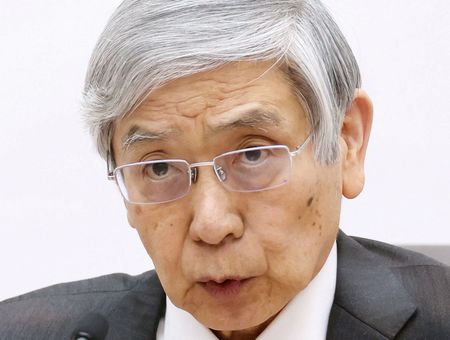

By Leika Kihara
TOKYO (Reuters) -The Bank of Japan shocked markets on Tuesday with a surprise tweak to its bond yield controls that allows long-term interest rates to rise more, a move aimed at easing some of the costs of prolonged monetary stimulus.
Shares tanked, while the yen and bond yields spiked following the decision, which caught off-guard investors who had expected the BOJ to make no changes to its yield curve control (YCC) until Governor Haruhiko Kuroda steps down in April.
In a move explained as seeking to breath life back into a dormant bond market, the BOJ decided to allow the 10-year bond yield to move 50 basis points either side of its 0% target, wider than the previous 25 basis point band.
But the central bank kept its yield target unchanged and said it will sharply increase bond buying, a sign the move was a fine-tuning of existing ultra-loose monetary policy rather than a withdrawal of stimulus.
Kuroda said the move was aimed at ironing out distortions in the shape of the yield curve and ensuring the benefits of the bank’s stimulus programme are directed to markets and companies.
“Today’s step is aimed at improving market functions, thereby helping enhance the effect of our monetary easing. It’s therefore not an interest rate hike,” Kuroda told a news conference.
“This change will enhance the sustainability of our monetary policy framework. It’s absolutely not a review that will lead to an abandonment of YCC or an exit from easy policy.”
As widely expected, the BOJ kept unchanged its YCC targets, set at -0.1% for short-term interest rates and around zero for the 10-year bond yield, at a two-day policy meeting that ended on Tuesday.
The BOJ also said it would increase monthly purchases of Japanese government bonds (JGBs) to 9 trillion yen ($67.5 billion) per month from the previous 7.3 trillion yen.
The benchmark Nikkei share average slumped 2.5% after the decision, while the dollar fell as much as 3.1% to a four-month low of 132.68 yen. The 10-year JGB yield briefly spiked to 0.460%, close to the BOJ’s newly set implicit cap.
“Maybe this is a baby step to test out the strategy and see what the market reaction is, and how much it’s reacting,” said Bart Wakabayashi, branch manager at State Street in Tokyo. “I think we’re seeing the first toe in the water.”
Already, markets are guessing what the BOJ’s next move could be as Kuroda’s term draws to an end and with inflation expected to remain above its 2% target well into next year.
“They’ve widened the band, and I guess that came earlier than expected. It raises questions as to whether this is a precursor of more to come, in terms of policy normalisation,” said Moh Siong Sim, currency strategist at Bank of Singapore.
“The writing’s on the wall that perhaps the sharp yen weakness that we’ve seen previously was uncomfortable for policymakers…it’s clear that it adds to the yen strength story next year.”
The BOJ’ ultra-low rate policy and its relentless bond buying to defend its yield cap have drawn increasing public criticism for distorting the yield curve, draining market liquidity and fuelling an unwelcome yen plunge that inflated the cost of raw material imports.
($1 = 133.3200 yen)
(Reporting by Leika Kihara; Additional reporting by Rae Wee in Singapore; Editing by Sam Holmes)

